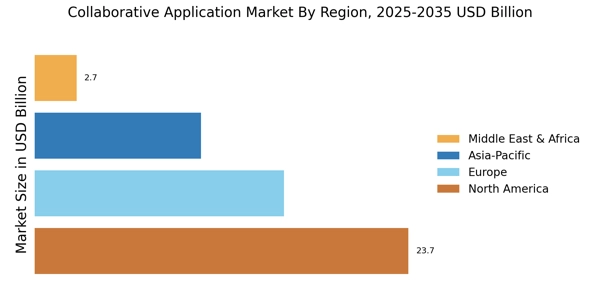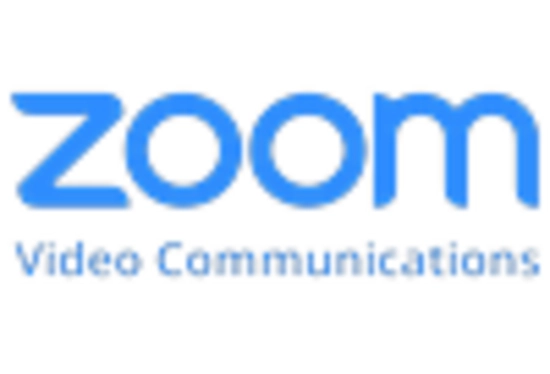The Collaborative Application Market is currently characterized by a dynamic competitive landscape, driven by rapid technological advancements and an increasing demand for seamless communication and collaboration tools. Major players such as Microsoft (US), Google (US), and Slack Technologies (US) are at the forefront, each adopting distinct strategies to enhance their market positioning. Microsoft (US) emphasizes innovation through its integration of AI capabilities into its Teams platform, aiming to streamline workflows and improve user experience. Meanwhile, Google (US) focuses on expanding its Workspace offerings, enhancing collaboration features to attract a broader user base. Slack Technologies (US) continues to refine its platform by fostering integrations with other applications, thereby enhancing its utility in diverse organizational contexts. Collectively, these strategies not only intensify competition but also drive the evolution of collaborative tools, pushing the boundaries of what these applications can achieve.
In terms of business tactics, companies are increasingly localizing their services to cater to regional preferences and regulatory requirements. This localization, coupled with supply chain optimization, is crucial in a market that appears moderately fragmented, with numerous players vying for market share. The collective influence of key players like Cisco Systems (US) and Zoom Video Communications (US) further shapes the competitive structure, as they leverage their established reputations to penetrate new markets and enhance their service offerings.
In August 2025, Microsoft (US) announced a significant upgrade to its Teams platform, incorporating advanced AI features designed to facilitate real-time language translation and transcription. This strategic move not only enhances user accessibility but also positions Microsoft as a leader in the integration of AI within collaborative applications. The implications of this upgrade are profound, as it could potentially redefine how global teams communicate, thereby increasing Microsoft’s competitive edge in the market.
In September 2025, Google (US) unveiled a new suite of tools within its Workspace platform aimed at improving project management and team collaboration. This initiative reflects Google's commitment to enhancing user experience and fostering productivity. By integrating these tools, Google (US) seeks to create a more cohesive ecosystem that encourages collaboration across various sectors, which may attract new users and retain existing ones.
In October 2025, Slack Technologies (US) launched a partnership with a leading project management software provider, enhancing its platform's capabilities. This collaboration is indicative of Slack's strategy to broaden its functional scope and appeal to a wider audience. By integrating with established project management tools, Slack (US) not only enhances its value proposition but also positions itself as a versatile solution for organizations seeking comprehensive collaboration tools.
As of October 2025, the competitive trends within the Collaborative Application Market are increasingly defined by digitalization, sustainability, and the integration of AI technologies. Strategic alliances are becoming pivotal, as companies recognize the need to collaborate to enhance their offerings and reach. Looking ahead, it is likely that competitive differentiation will evolve, shifting from traditional price-based competition to a focus on innovation, technological advancements, and supply chain reliability. This transition suggests that companies that prioritize these elements will be better positioned to thrive in an increasingly competitive landscape.


















Leave a Comment